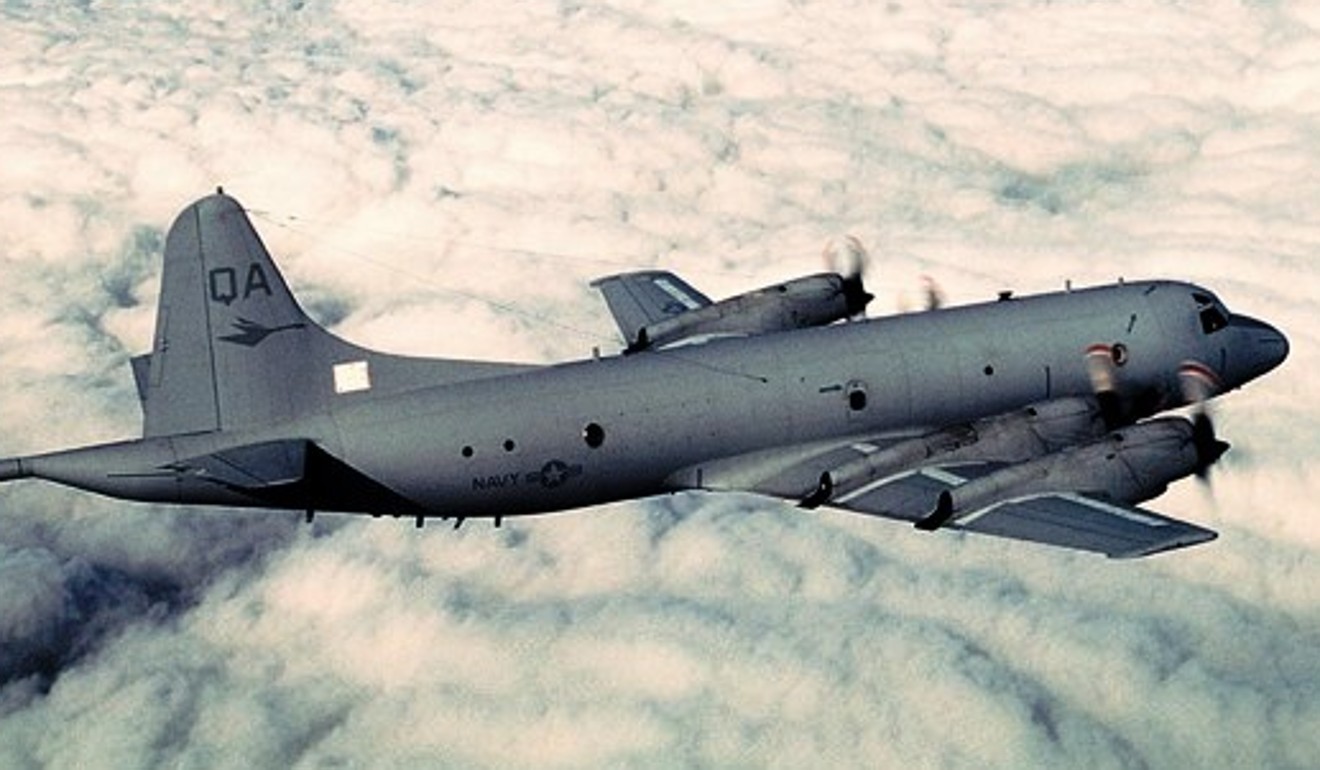
China dismisses US account of ‘dangerous intercept’ in South China Sea
Beijing instead blames US flight for infringing its territory sovereignty
The defence ministry yesterday accused the US armed forces of posing a danger in the South China Sea last week, rejecting Washington’s account of an encounter between Chinese and US military aircraft.
An analyst said common ground on North Korea might have temporarily tamped down tensions between the two countries over the disputed waters but the renewed strains suggested long-term problems in managing the region could not be resolved.
The ministry said a US surveillance plane was spotted in airspace southeast of Hong Kong on Thursday, and Chinese military aircraft intercepted it in accordance with the law.
“The operation by the Chinese military aircraft was professional and safe,” the ministry said. “Recently, the US has been sent military vessels and aircraft to China’s maritime and air space, infringing upon China’s territorial sovereignty and posing a threat to the lives of people from both sides. Such operations [by the US] are the root of Sino-US military maritime and air safety incidents.”
US officials said a US Navy P-3 Orion was 240km southeast of Hong Kong in international airspace when two Chinese J-10 fighters carried out an “unsafe intercept”. One J-10 flew within 200 metres of the front of the US plane, restricting its ability to manoeuvre, the Pentagon said.

Tensions in the South China Sea have resurfaced in recent weeks after easing over the previous months. Last week, the US Navy guided missile destroyer USS Dewey sailed within 12 nautical miles of an artificial island built up by China on Mischief Reef.
Beijing-based military analyst Li Jie said ties between China and the US had improved, especially since their presidents met in April and the countries sought to rein in development of North Korea’s nuclear programme.
“But from a US strategic standpoint, it’s difficult for the US to really improve ties with China. Washington just exercised a bit of restraint to get China’s help on North Korea,” Li said. “Now the world has reached consensus on new sanctions against Pyongyang, the US can intervene in the South China Sea again.”
The foreign ministry also said it was “strongly dissatisfied” with references in a Group of Seven statement to the East and South China Sea disputes, and called on the group to stop making “irresponsible remarks”.
In their communique on Saturday, G7 leaders said they were concerned by the situation in the two maritime areas and called for demilitarisation of “disputed features”.
Foreign ministry spokesman Lu Kang said China was committed to properly resolving disputes with all nations involved through negotiations while maintaining peace and stability in the East China Sea and South China Sea.
Beijing and Tokyo have a long-standing a dispute over the Diaoyus, a group of uninhabited islands in the East China Sea that Japan controls and calls the Senkakus. Beijing’s extensive claims to the South China Sea are also challenged in part by Brunei, Malaysia, the Philippines, Vietnam and Taiwan. The US has criticised China’s construction of islands and build-up of military facilities in the South China Sea, concerned they could be used to restrict free navigation and broaden Beijing’s strategic reach.
Liu Weidong, a Sino-US affairs specialist from the Chinese Academy of Social Sciences, said Sino-US cooperation in other areas did not mean disputes over the South China Sea would fade. “The US Pacific Fleet has been calling for resumption of navigation in the South China Sea, and the flight intercept might be China’s way to express anger,” Liu said.
Additional reporting by Reuters


